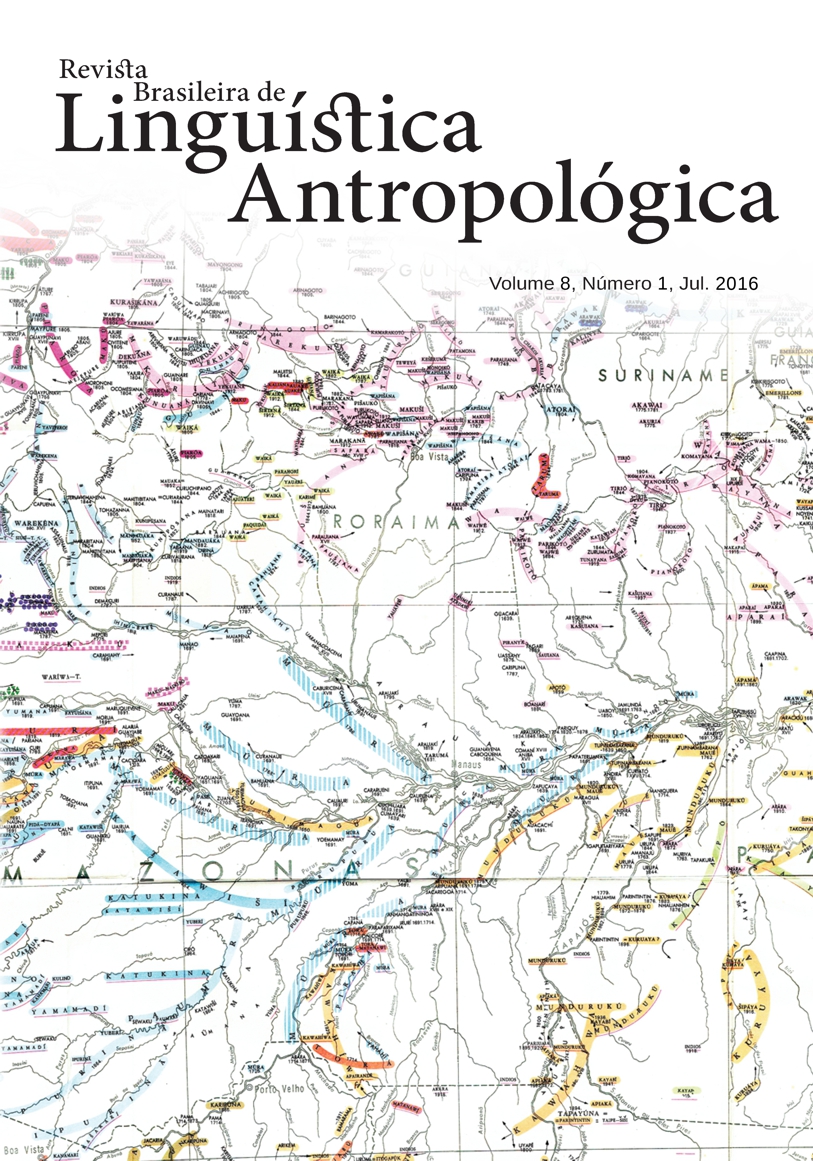Antipassive structure in Tenetehára (Tupi-Guarani family)
DOI:
https://doi.org/10.26512/rbla.v8i1.16311Palavras-chave:
LinguísticaResumo
This article aims to describe and examine the antipassive construction in the Tenetehára language (Tupi-Guarani family). For this, it will be shown that the transitive verbs, on receiving the morpheme {puru-}, then exhibit the following properties of antipassive constructions: (i) they come to have an intransitive syntactic structure and (ii) the abstract Case of the internal argument is not valued by v, but by the postposition -ehe. Generally, such configurations behave essentially like intransitive sentences. Using a minimalist approach, we show that the main difference between an antipassive clause and a transitive one is that although the antipassive vP selects an external argument, its head is not able to value the abstract Case of the internal argument. For this reason, the object is dependent on the postposition -ehe for the oblique Case. Furthermore, unlike what happens in the derivation of transitive constructions, the φ-feature of the antipassive vP is lexically valued, which does not allow the agreement (nominative system) in terms of φ-feature, with its external argument. The result is that this external argument moves to the highest vP Spec position in the tree structure, whose head is instantiated by the verb {-wer} “want”, with which it establishes a relationship agreement in terms of φ-feature , triggering the second agreement paradigm (absolutive system).Downloads
Referências
Aldridge, E. 2012. Antipassive and ergativity in Tagalog. Lingua: 122(3):192-203.
Baker, M. C. 1988. Incorporation: a theory of grammatical function changing. Chicago: University of Chicago Press.
Bittner, M. 1987. On the semantics of the Greenlandic antipassive and related constructions. International Journal of American Linguistics 53:194-231.
Blight, R. C. 2004. Head Movement, Passive and Antipassive in English. Ph.D. dissertation, UT, Austin, TX.
Camargos, Q. F. 2010. Para onde foram os adjetivos em Tenetehára? Monograph, UFMG, Belo Horizonte, MG.
Camargos, Q. F. 2015. Exploring agreement displacement from the IA to the EA in the Tenetehára language (Tupí-Guaraní). In Handout of the Talk, July 1, 2015, GTTG da Anpoll. Universidade Federal de Minas Gerais, Belo Horizonte.
Castro, R. C. 2013. O epifenômeno da alternância de valência na língua Tenetehára (Tupí-Guaraní). Revista da Anpoll 34:347-391.
Chomsky, N. 1995. The Minimalist Program. Cambridge: The MIT Press.
Chomsky, N. 2005. Three factors in language design. Linguistic Inquiry 36:1-22
Cooreman, A. 1994. A functional typology of antipassive. In Voice: form and function, ed. B. Fox, P. Hopper, 49-86. Amsterdam: John Benjamins Publishing.
Dixon, R. M. W. 1979. Ergativity. Language 55:59-138.
Dixon, R. M. W. 1994. Ergativity. Cambridge: Cambridge University Press.
Duarte, F. B. 2005a. Propriedades denotacionais dos prefixos {i-} e {h-} em Tenetehára. Revista Estudos Linguísticos 34:1194-1199.
Duarte, F. B. 2005b. Codificação de argumentos e ergatividade (cindida) em Tenetehára. Revista LIAMES 5:111-142.
Duarte, F. B. 2007. Estudos de morfossintaxe Tenetehára. Belo Horizonte: FALEUFMG Press.
Duarte, F. B. 2012. Tenetehára: a predicate fronting Language. The Canadian Journal of Linguistics 57(3):359-386.
England, N. C. 1988. Mam Voice. In Passive and Voice, ed. M. Shibatani, 525-545. Amsterdam: John Benjamins Publishing.
Givón, T. 1993. English Grammar: a functional-typological introduction. Amsterdam: John Benjamins Publishing.
Harrison, C. 1995. The interplay of causative and desiderative in Guajajara. Revista dos Cursos de Pós-Graduação em Letras 4:83-114.
Nolasco, R. 2009. What Philippine ergativity really means. Baguio: University of the Philippines.
Palmer, F. R. 1994. Grammatical Roles and Relations. Cambridge: Cambridge University Press.
Polinsky, M. 2005. Antipassive constructions. In The World Atlas of Language Structures, ed. M. Haspelmath, M. S. Dryer, D. Gil, B. Comrie. Oxford: Oxford University Press.
Rodrigues, A. D. 1985. Relações internas na família lingüística Tupí-Guaraní. Revista de Antropologia 27/28:33-53.
Rodrigues, A. D. 1990. You and I=neither you nor I: the personal system of Tupinambá. In Amazonian linguistics: Studies in lowland South American languages, ed. D. L. Payne, 393-405. Austin: University of Texas Press.
Silverstein, M. 1976. Hierarchy of features and ergativity. In Grammatical categories in Australian languages, ed. R. M. W. Dixon, 112-171. New Jersey: Humanities Press.
Spreng, B. 2001. Little v in inuktitut: antipassive revisited. Linguistica atlântica 23:155-190.
Wurmbrand, S. 2011. On Agree and Merge. Storrs: University of Connecticut.
Wurmbrand, S. 2012. Parasitic participles: evidence for the theory of verb clusters. Taal en Tongval, 64:129-156.
Wurmbrand, S., 2013. The features of voice. In: Handout of the Talk, October 26, 2013, Little v Workshop. Leiden University, Holland.
Downloads
Publicado
Como Citar
Edição
Seção
Licença
Copyright (c) 2017 Revista Brasileira de Linguística Antropológica

Este trabalho está licenciado sob uma licença Creative Commons Attribution 4.0 International License.
Autores que publicam na RBLA concordam com os seguintes termos:
a) Autores mantêm os direitos autorais e concedem à revista o direito de primeira publicação, sendo o trabalho simultaneamente licenciado sob a Creative Commons Attribution License, o que permite o compartilhamento do trabalho com reconhecimento da autoria do trabalho e publicação inicial nesta revista.
b) Autores têm autorização para assumir contratos adicionais separadamente, para distribuição não exclusiva da versão do trabalho publicada nesta revista (ex.: publicar em repositório institucional ou como capítulo de livro), com reconhecimento de autoria e publicação inicial nesta revista.
c) Autores têm permissão e são estimulados a divulgar seu trabalho online (ex.: em repositórios institucionais ou na sua página pessoal) a qualquer ponto antes ou durante o processo editorial, já que isso pode gerar alterações produtivas, bem como aumentar o impacto e a citação do trabalho publicado.






